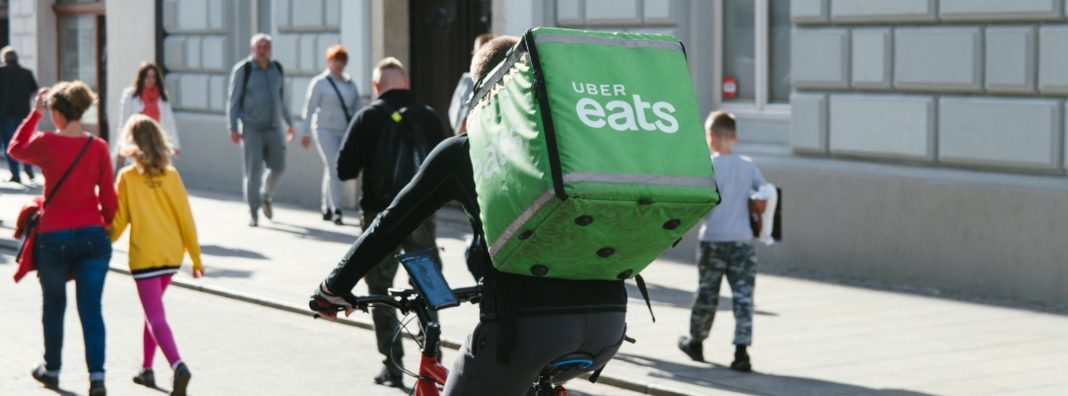
To control the spread of coronavirus, New York City announced last week that all restaurants and bars would close for dine-in customers, leaving restaurants and hungry residents to rely on delivery and take out. To ease the burden on overworked delivery workers, de Blasio allowed previously illegal e-bikes to operate in the city after months of controversial crackdowns.
While this move was made in desperate times, the fact that the de Blasio administration is willing to suspend the ban now raises questions over its necessity during normal circumstances. Lifting the ban during the coronavirus crisis reflects the fact that delivery workers are essential to the city, and that delivery workers cannot deliver efficiently without e-bikes.
The temporary legalization follows earlier attempts at legalizing e-bikes and e-scooters. In June 2019, a bill to legalize e-scooters and e-bikes was presented to Governor Andrew Cuomo. Introduced by State Senator Jessica Ramos and Assembly Member Nily Rozic, the bill was meant to stop the crackdown on delivery workers who use e-bikes to facilitate their jobs. The bill would also allow New York municipalities to create their own regulations regarding personal electric vehicles. The bill passed with a large majority in the Senate (56–6) and the Assembly (137–4).
Yet despite the overwhelming support for the bill, Governor Cuomo vetoed the bill in December 2019, citing safety concerns surrounding e-bikes. In particular, he criticized the lack of helmet requirements for riders. Supporting Cuomo’s decision, Mayor de Blasio said it was common sense that e-bikes were dangerous and should therefore not be allowed in the streets of New York City.
The Ramos-Rozic bill focuses on the discriminatory impacts of the regulation. New York’s ban on e-bikes impacts food delivery workers, the majority of which are working-class minorities or immigrants who believe they are wrongly being persecuted just for doing their job. Despite being illegal, e-bikes in New York have been one of the main modes of transportation for delivery workers. Around three-fourths of the 40,000 delivery workers in New York City use e-bikes. For many of NYC’s delivery workers, an e-bike goes a long way: e-bikes allow them to cover more ground and complete more deliveries, helping them earn more.
Under current regulations, e-bike riders risk a lot if they get caught. Not only do they face a minimum $500 fine, their e-bike being confiscated, or even jail time, they also risk losing their source of income. With an average hourly wage of $10, it can be close to impossible to pay the fine, recuperate the cost of the bike — up to $3,000 — and feed their families. The ban on e-bikes put one of the city’s most vulnerable populations in a precarious position.
The ban on e-bikes and its effects on delivery workers might be justified if e-bikes were unsafe as de Blasio and Cuomo claim. But so far, data suggests that e-bikes are likely not as dangerous as one might think. A recent study of the injury risks of e-bikes and e-scooters shows that e-bike injuries account for 0.13 percent of every 10,000 injuries reported. Compared to the 385.4 injuries caused by a regular bicycle, e-bikes could be considered pretty safe. A study of a bicycle share program in Tennessee evaluated the speeds on roadways and shared infrastructure, cyclist behavior at intersections, and wrong way travel of both e-bikes and bicycles and found that there are no major differences in user safety between both kinds of bicycles. Yet another study finds that there is almost no difference in risks between e-bikes and regular bicycles. These studies suggest that e-bikes are not significantly different from bicycles in terms of safety concerns.
Beyond delivery workers, e-bikes have other benefits for the city. First, New York City has an ongoing struggle with traffic congestion. Most recently the city is inching towards adopting congestion pricing to help ease traffic. Despite traffic reduction being such a high priority for the city, the role that e-bikes could have in traffic reduction has not been accounted for. Around 48% of car trips in US cities are less than three miles. If more e-bikes replace these short car trips, fewer cars would be on the street, and congestion and traffic would be reduced.
Second, legalizing e-bikes would also help the environment. By removing cars from the streets, e-bikes also prevent the release of emissions. Lastly, e-bikes could also provide a mobility option for the portion of the population that does not live within walking distance of public transportation, particularly in the outer boroughs.
Legislation to decriminalize e-bikes in New York City remains part of the proposed state budget that must be approved by April 1. Last week, delivery workers and their e-bikes proved to be a vital lifeline for the city while delivering food to those in quarantine. Their efforts have shown that they are a necessity for the city. Lifting the ban on e-bikes was long overdue, and hopefully, it will stay that way.

